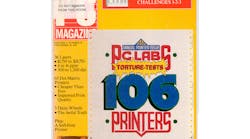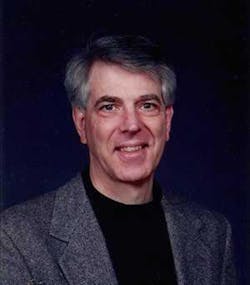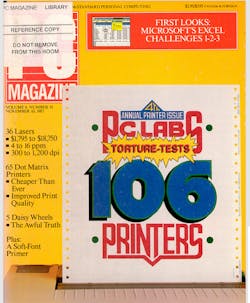Electronic Design has been around since 1952. PC Magazine (PC Mag), on the other hand, didn’t come into being until 1982, when the IBM PC changed the way we looked at computing. Smartphones were only found in science-fiction stories. In 2009, PC Mag turned into an online-only publication. In its heyday, though, PC Magazine was massive, competing in size with some phonebooks. Hmmm, does anyone still have a phonebook?
So, what is the relationship between Electronic Design and PC Magazine?
As it turns out, we have a couple PC Magazine alumni at Electronic Design. I was the Lab Director for PC Labs , which PC Magazine started up to test hardware and software in a standard fashion. PC Labs benchmarks were well-known and freely available, distributed on now defunct technology like floppy disks and modem-based bulletin-board systems. The other alum was Joe Desposito (Fig. 1), who worked with me a PC Labs. Joe is a retired Electronic Design editor.
1. Joe Desposito, a former Electronic Design Editor-in-Chief, worked with me at PC Magazine’s PC Labs.
Joe and I worked with a number of editors at PC Magazine, including Editor-in-Chief and Publisher Bill Machrone, along with editors Paul Somerson (Fig. 2), Luisa Simone, and Bill Howard. What prompted this article was an article on PC Mag about Paul Somerson, who recently passed away.
2. Paul Somerson was an editor of PC Magazine and PC Computing.
Paul was a great writer and editor. He was passionate about writing and the technology. He had “legendary feuds with the managing editor and copy-edit staff.” Paul was also the Editor-in-Chief for PC/Computing from 1991 to 2000, which was also part of Ziff-Davis, a massive publishing firm.
Paul also wrote the bestselling DOS Power Tools. Remember, the PC started running DOS. Windows wasn’t even a gleam in Bill Gates’ eye yet. The book was extremely popular and was printed in numerous languages.
3. Bill Machrone was the Editor-in-Chief and Publisher of PC Magazine.
Unfortunately, Paul is not the only PC Mag alum that is no longer with us. Bill Machrone (Fig. 3) passed away in 2016. Bill and I were both freelance writers for Sol Libes' Microsystems magazine, which in time became part of Ziff Davis. It eventually morphed into LAN Magazine, where I was also a contributing editor. Bill Machrone came up with PC Magazine’s formula: PC = EP2 (PC Magazine is Evaluating Products * Enhancing Productivity). He also coined Machrone’s Law, “The PC you want to buy will always be $5000.” The price has dropped a little, but it held true for quite a while.
PC Labs (Fig. 4) started in 1 Park Avenue in New York City. It morphed a couple times, and had a networking spinoff that tested hardware and software for that new technology, the local-area network (LAN). Coax cables and token ring were eventually replaced by Ethernet and eventually Wi-Fi.
4. PC Labs was designed to let writers evaluate hardware and software for PC Magazine.
One of the busiest times at PC Labs and PC Magazine was during the testing for the annual printer issue (Fig. 5). This required the delivery, setup, testing, writing, and return of hundreds of printers of all types. It involved many editors, contributing editors, and PC Labs personnel.
5. The annual printer issue was always a busy time for PC Magazine and PC Labs—it involved testing hundreds of printers.
Bill, Paul and the other PC Mag editors, along with those involved with PC Labs, put PC Magazine on the map by providing consistent testing procedures and articles based on this regimen. Replicating something of this scale would be impractical for a publication like Electronic Design these days. The closest is the benchmarking done by Embedded Microprocessor Benchmark Consortium (EEMBC). I have covered EEMBC’s benchmarks since its inception.
PC Mag is probably on the reading list of many Electronic Design readers. You can still check out Bill Howard’s blog on ExtremeTech, another Ziff-Davis website. Luisa Simone is with Tadpole Graphics, which designs and implements websites. And some long-time contributors are still at PC Mag, including John C. Dvorak and Neil Rubenking.






